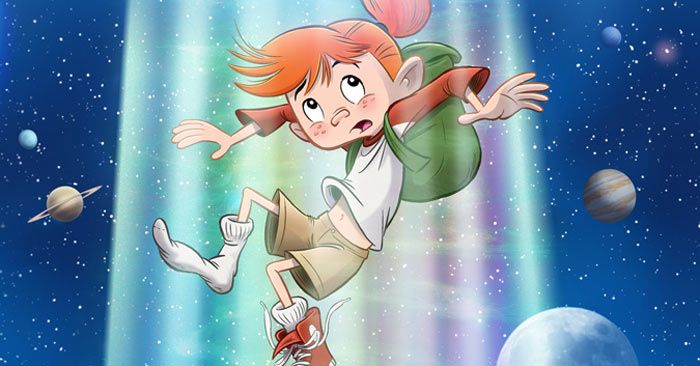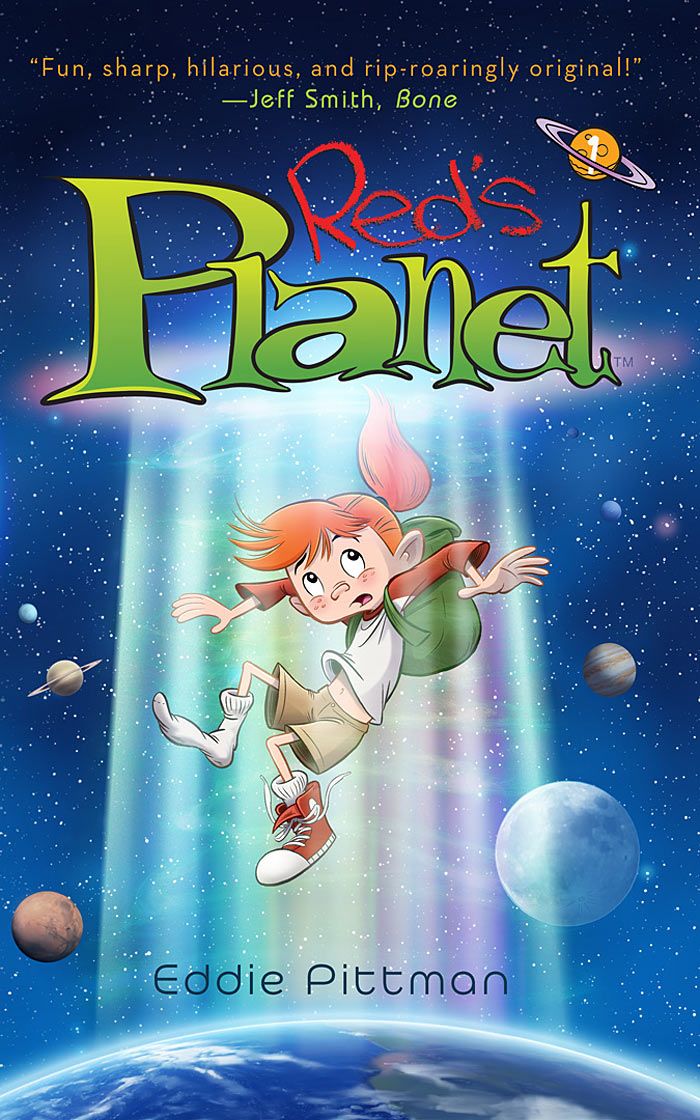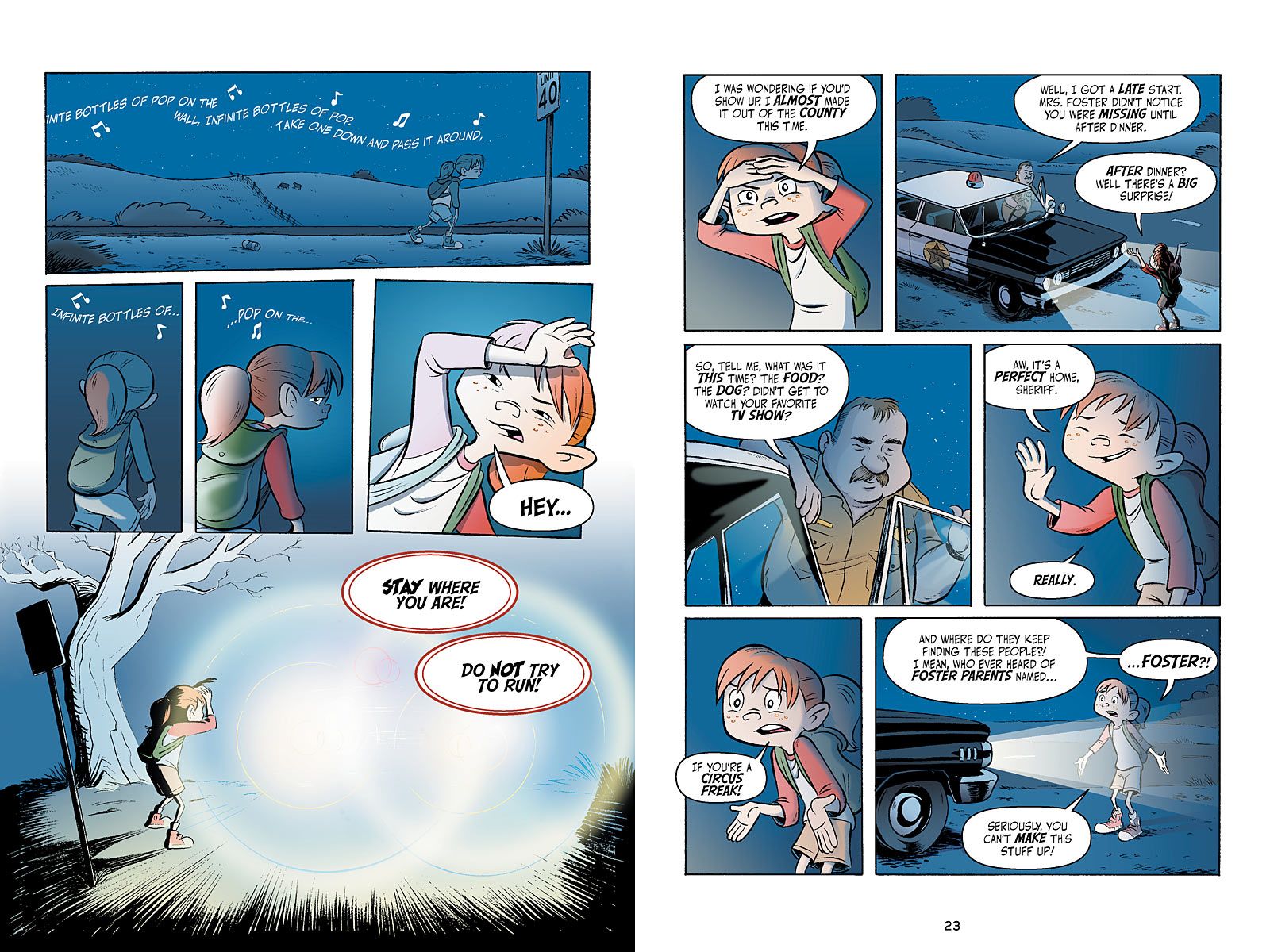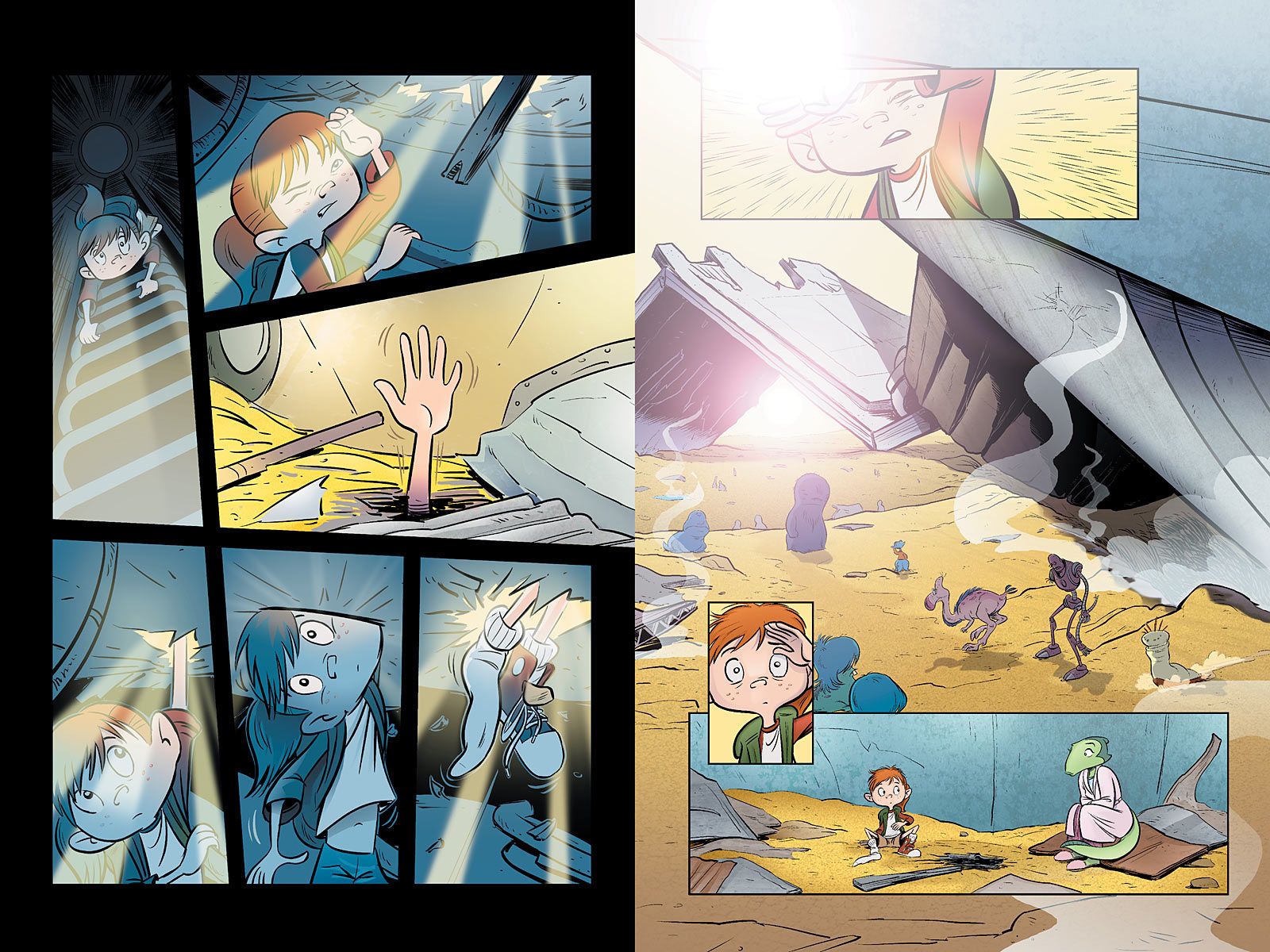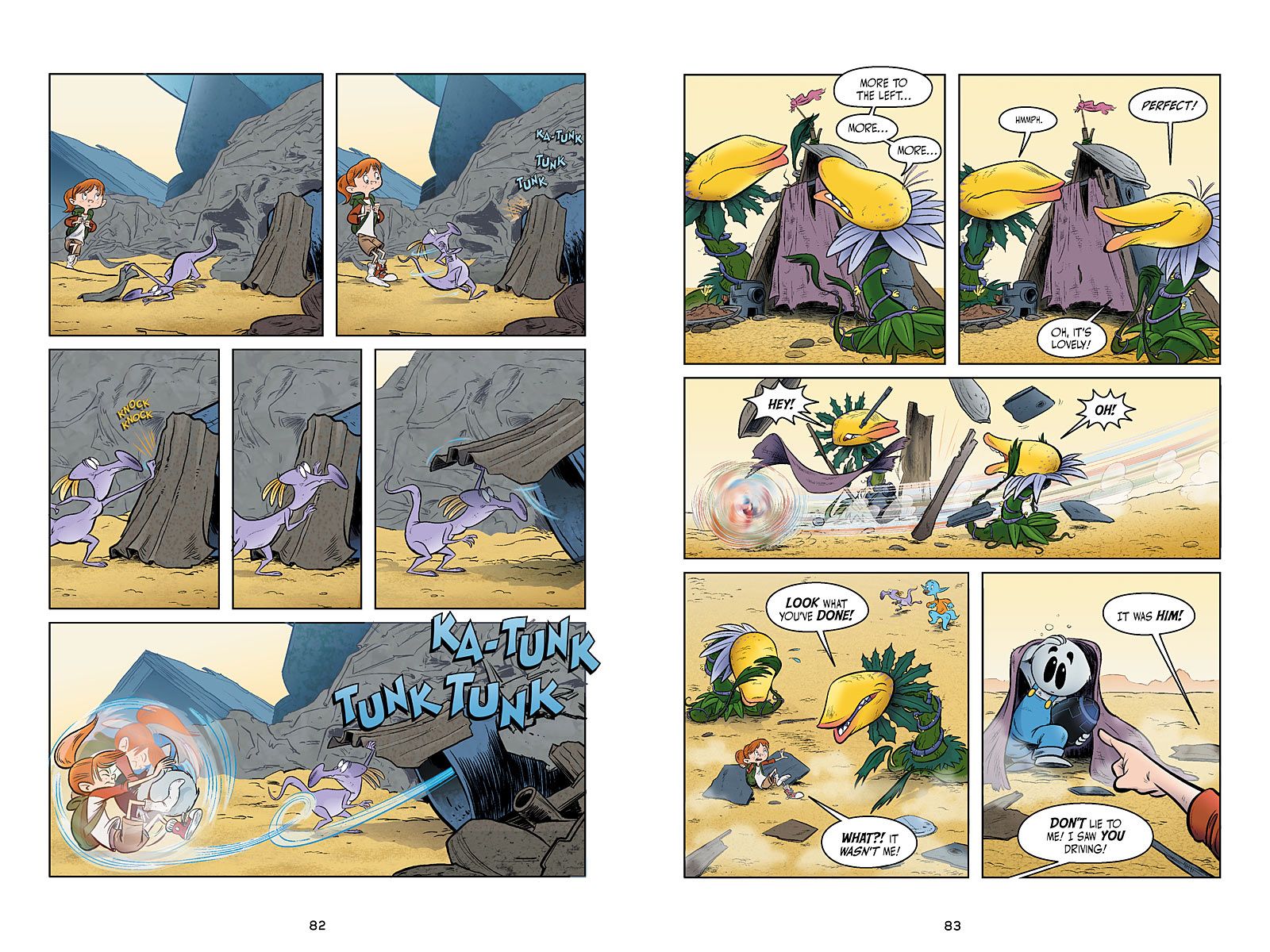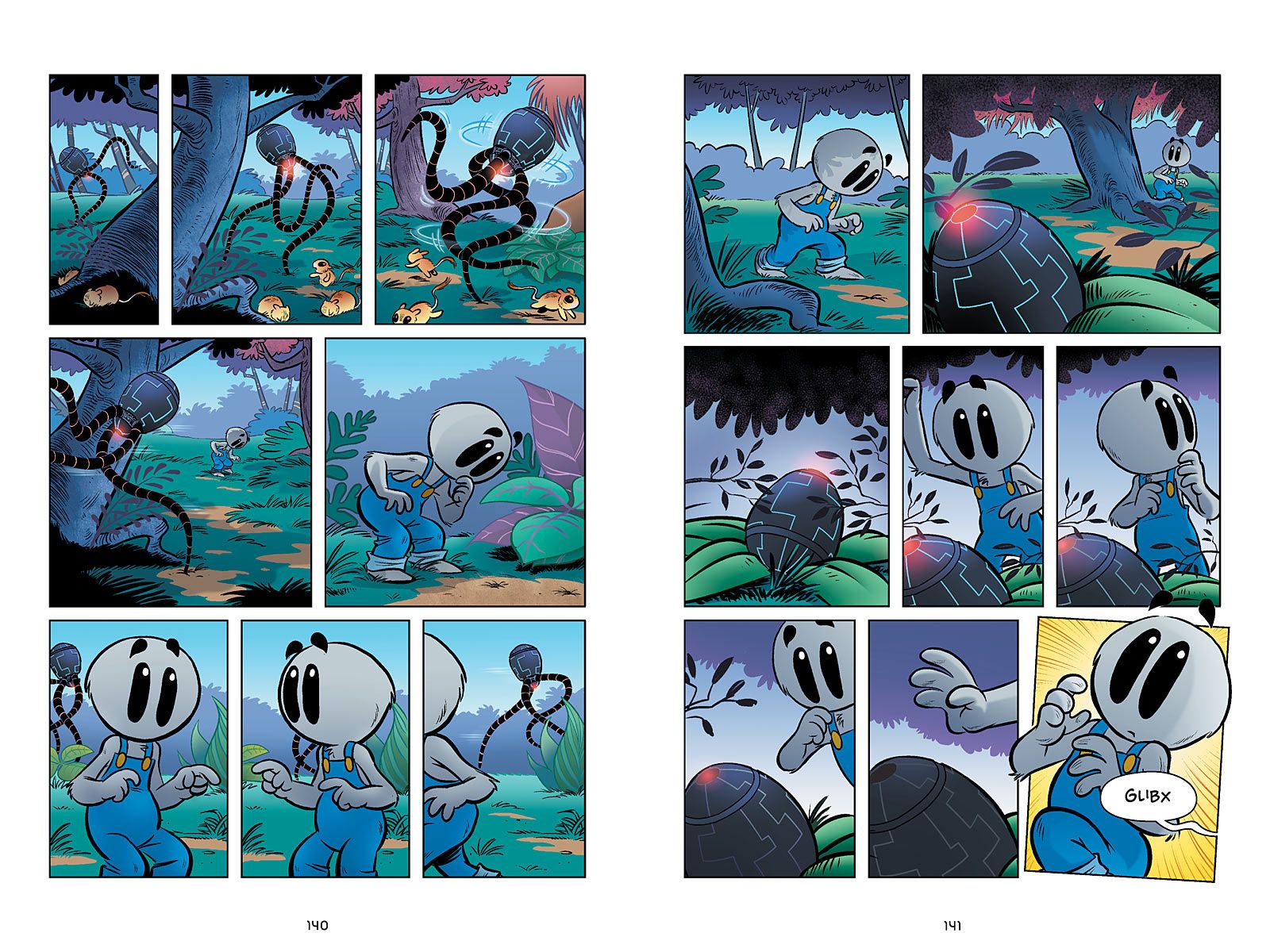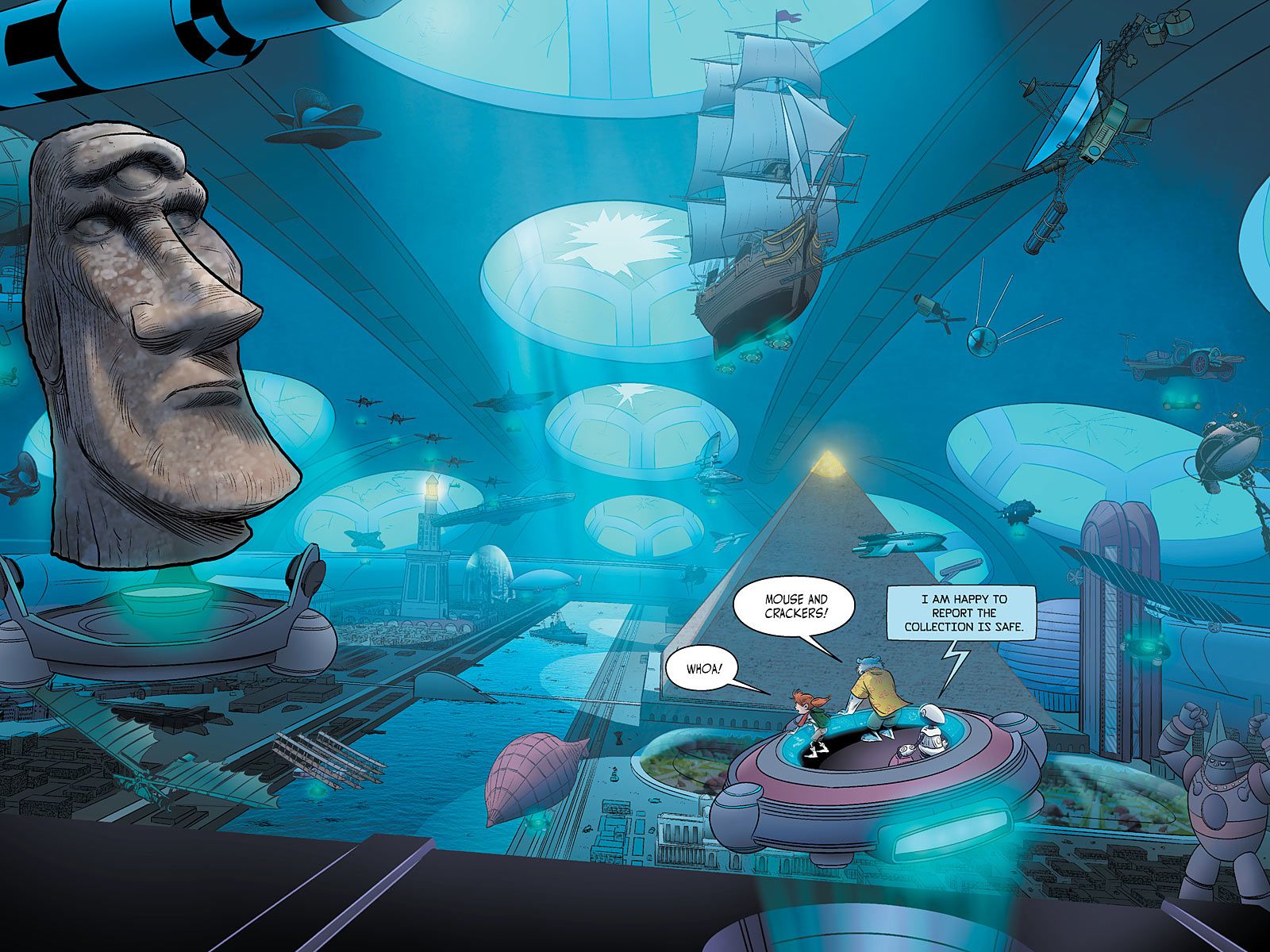While many have considered the possibility of alien abduction, one aspect often gets overlooked. If we're not alone, and if one of those alien races is abducting people from Earth, it's not a stretch to imagine they're also stealing from other planets.
That's part of the core conceit of Eddie Pittman's "Red's Planet," as ten-year-old Red (she hates being called that) is accidentally taken and finds herself stranded on an alien world with a cast of also-kidnapped aliens. Red's astonishing adventure arrives nearly two decades after Pittman began his career in animation. He worked on feature films like "Mulan" and "Tarzan," then later wrote and storyboarded for "Phineas and Ferb" (including voicing Darth Vader during the show's Star Wars episode!).
CBR News spoke with Pittman about "Red's Planet: A World Away From Home," which was released this week from Amulet Books, and the writer/artist touched on the universal themes of identity, family and home that weave through Red's story.
CBR News: Eddie, the first thing that caught my eye is that your protagonist hates being called "Red," but throughout the entire book, "Red" remains her only identity. Why is she only known by a name she hates?
Eddie Pittman: In many cases people live out their entire lives with nicknames they received as children. And sometimes we are known by names we don't like for some reason or another. It may be because of bullying or it may even be a term of endearment that we push away for some reason. Redheads are especially susceptible to this.
Red hasn't really been given a chance to introduce herself in a more formal manner. The other castaways quickly designate her "Red" before she has a chance. We don't know why she doesn't embrace the name, but I'm sure we'll find out soon.
How would you describe Red's foster living situation?
Red's foster home certainly isn't the worst place she could be. It's a beautiful old farmhouse somewhere in the mid-west, there are lots of kids her age, and her foster parents, the ironically named Fosters, are good people. Still, they obviously have their hands full. For Red, it just isn't where she wants to be, and, when you are in a place like that, no matter how ideal the situation, you look for ways out.
She's thrown in with a fairly eclectic cast after her alien abduction, including a few characters with different and specific family dynamics. The most obvious commonality is that none of the families is the traditional nuclear unit. Red herself comes from foster care. Is there a message in that?
Not overtly. I think the only message is family isn't always where we look for it or expect it. And doesn't that really apply to many things in life? Like happiness? Success? And to be clear, Red hasn't found a family yet. We have to wait and see how that plays out.
The big theme of the book seems to be "Home is where you make it," but we've only seen the most tentative steps toward Red and her castaway cohorts crafting a home. Is it fair to say that bond of location and people needs to develop naturally?
Absolutely. The castaways still mistrust one another. And Red really doesn't want to be part of a community as much as she wants to be alone.
On the subject of her being left alone (and she mostly is throughout the book), the supporting cast is actually quite large. Was it difficult to give the all of the other abductees/castaways enough space to intrigue readers while still letting Red fly solo for such long periods of time?
It's always a balancing game to give the supporting characters enough time to tell their stories without taking away from the central story. If you give them too much time, the audience forgets what the real story is and wants to know more about the secondary characters. But if you do it just right, the characters come to life and the reader thinks you told them much more than you actually did. I don't know which I achieved in Red's Planet, but I'm hoping the latter.
Although Red wants to be alone, she latches on to Goose a little bit, doesn't she? Is she just practical about recognizing that he knows the territory if nothing else.
It would seem that way, but she is only 10 years-old after all, and kids that age aren't notorious for being practical. I thinkRed is just plain stubborn and doesn't like to be told she can't do something --it's what got her in trouble with foster care time and time again. She isn't going to let Goose stand in the way of what she wants. Plus, I think she sees a kindred spirit in Goose. There's something there she identifies with.
Well, they both want to be left alone! How many books do you anticipate in the "Red's Planet" saga?
Currently there are three planned books.
The first four chapters of book one were serialized as a webcomic. Did you edit them at all for the print version? Will any parts of future Red books be online?
There have been a few changes here and there, but my publisher, Amulet Books, and my editor, Charlie Kochman, encouraged me to continue telling the story I set out to tell. The old webcomic pages are down now, but there are previews of the new book available at the site.
You've worked in animation for almost twenty years now. How long have you been creating comics? How much time do you devote to your cartooning these days?
Creating my own book has been a dream for as long as I can remember. I did a little work-for-hire penciling on a book for NOW Comics back in the '90s -- and I have been trying to buy back and burn them in the years since. But I could never sit myself down and create my own story. Maybe it was the perfectionist in me or just plain procrastination, whatever the reason, it wasn't until about 2009 that I finally took the steps toward what would become "Red's Planet."
Right now, I'm full-time on the "Red's Planet" books, but I take on a little animation related freelance whenever my book schedule frees up.
When can readers look forward to the next "Red's Planet" installment?
"Red's Planet: Friends and Foes" is slated for release in Spring 2017.
"Red's Planet: Book 1 - A World Away From Home" is on sale now.

